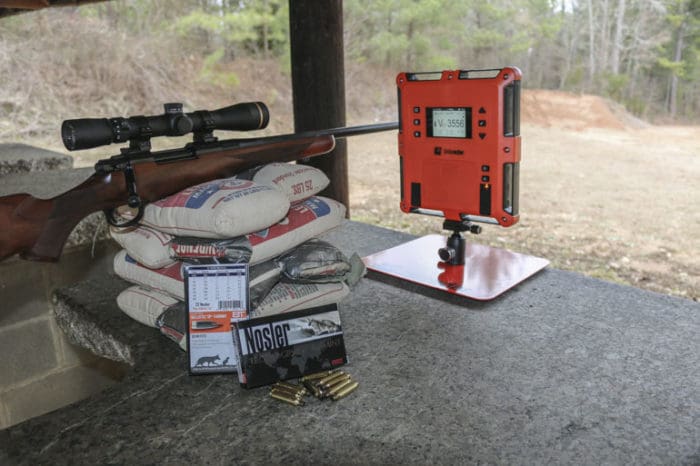In the 1950’s, scientists developed what we now refer to as ‘Doppler radar’. A more recent application of the Doppler-radar technology resulted in the chronograph, called Labradar (produced by Infinition Inc. of Trois-Rivieres, Quebec, Canada).
My own research into what chronograph to purchase began because of a series of reviews I was asked to do on various firearms. I expected to purchase a light-based product. This was the only type with which I was familiar, having used those belonging to friends. When I discovered Labradar I admit I was more skeptical than intrigued.
However, as I investigated the technology, I became convinced that this might be a revolutionary method for collecting measurements important for competitive shooters and hunters. The fact that this product gives accurate readings without being concerned about light conditions, or [sigh] accidentally shooting the chronograph, was exciting.
To date, I have used my Labradar unit to collect data from 12 rifles, 2 revolvers and 1 semi-automatic pistol. The setup takes only a few minutes for each range session.
I find the screen images easy to see and interpret; these include the date, time, velocity range (rifle, handgun or bow), battery power level, shot series number, shot number in the series, velocity units, distance units, radar strength, muzzle velocity and velocities at five distances from the muzzle/bow.
The information for each shot series, as downloaded from an SDHC card onto a computer, is contained in an Excel file and includes all of the above values for each shot fired, plus the lowest, highest and mean muzzle velocity (along with the standard deviation and spread from these values), the kinetic energy values at each distance and a power factor value (used by action shooters).
I have never found a light-based chronograph to be as straightforward or valuable (in terms of the variety of data collected) as I have my Labradar. After many range sessions with 15 firearms, I can state unequivocally that if my Labradar ever stops functioning, I will purchase a replacement!
Be warned. The Labradar isn’t inexpensive. It will run you about $560. But it’s worth every penny.
